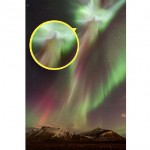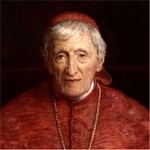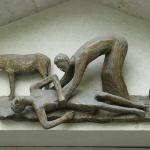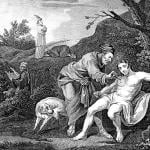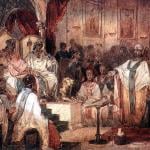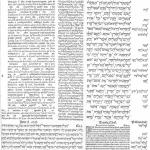 Remembering that the New Testament is hidden in the old and the old is made manifest in the New, yesterday’s feast provides three powerful images from the past that converge at Pentecost: Wind, Fire and Witness.
Remembering that the New Testament is hidden in the old and the old is made manifest in the New, yesterday’s feast provides three powerful images from the past that converge at Pentecost: Wind, Fire and Witness.
The mighty rushing wind connects back to the first day of creation where in the first verses of the Bible we are told that “In the beginning God created the heavens and the earth, and the earth was without form and void, and the Spirit of God moved upon the face of the waters.” The Hebrew for “Spirit of God” is ruach Elohim which means “Wind of the Mighty One” or “Mighty Wind” or “Breath of God” or “Spirit of God”. Because Hebrew has a small vocabulary single words often carry a multiplicity of meanings. The image therefore is of a mighty rushing storm wind blowing over the waters. Thus Pentecost is linked with the first moment of creation and we understand that Pentecost is a day of new creation within human history. Go here for more detailed analysis of ruach in the Genesis story.
The second story of creation also uses the word ruach but this time the Spirit of God is breathed into the man Adam he has formed from the earth. This Spirit of God is therefore not only present hovering over the waters at the primordial creation, but also at the individual level at the creation of man. This is echoed in John 20 where Jesus breathes on his apostles and imparts the Holy Spirit to them. Thus at both the cosmic level and the individual level the spirit of God is breathed to bring about a new creation.
There is also a liturgical link within the Catholic tradition. At the chrism Mass on Holy Thursday the bishop, while blessing the Sacred Chrism–breathes on the sacred chrism. The chrism will be used for the anointing of those baptized, confirmed and ordained. Thus the coming of the Holy Spirit is through the anointing oil and the breath of God flowing through the inspiration (in-breathing) of Christ to his apostles, and then through their successors the bishops of the Catholic Church, and then through the Holy Oils to those baptized and confirmed.
The second powerful image of Pentecost is that of fire. Heraclitus–the Greek philosopher determined that fire was the life force within nature, and fire as the presence of God echoes within the Old Testament–with Moses at the Burning Bush, the pillar of fire that leads the Israelite’s through the wilderness to the Promised Land, the eternal flame lit in the tabernacle and the temple and the fires of the incense and burnt offerings. At Pentecost this fire descends onto the individuals with individual tongues of flame.
All these are reflected in the use of lights within Catholic worship–the Pascal candle not only representing the Light of Christ at the resurrection, but also reminding of the pillar of fire. As the wind of God moves over the waters of creation, so the Pascal light is placed by the font, and from it each of the baptized receive their own individual flame as they receive the baptismal candle.
The wind and the fire of the Spirit are given to empower the third image of Pentecost: the witness of the Apostolic Church. It is only through the supernatural gift of the Spirit that human language is transformed and empowered. Language is empowered by human breath and is driven by the fire of life and passion of the heart. When these natural gifts are infused with the supernatural graces that come with the Holy Spirit the power to witness to the truth of the gospel is given to the apostolic church.
This power to witness is symbolized by the ability to speak in other tongues. This new creation of humanity is suddenly unified by the supernatural gift so that language no longer separates, but unites humanity. The new language is the language of the Spirit. Inasmuch as an individual lives in the power of the Spirit he will understand and sympathize and therefore communicate with brothers and sisters from every race and language.
Finally, this wind, this fire and this witness are given to humanity through the apostolic church gathered around the Mother of God–Mother of the Church. She is the lightning rod of the Holy Spirit. As the Holy Spirit hovered over the waters of creation, so the Virgin Mother was overshadowed by the Holy Spirit at the Annunciation. That first step towards the new humanity was enabled by the agreement of the Second Eve, and it is she who therefore also becomes the channel and active participant in the Spirit of God being poured out on all humanity.
Read More: Msgr Pope preaches on the same theme here, but expands it to include the images of water and the dove.




